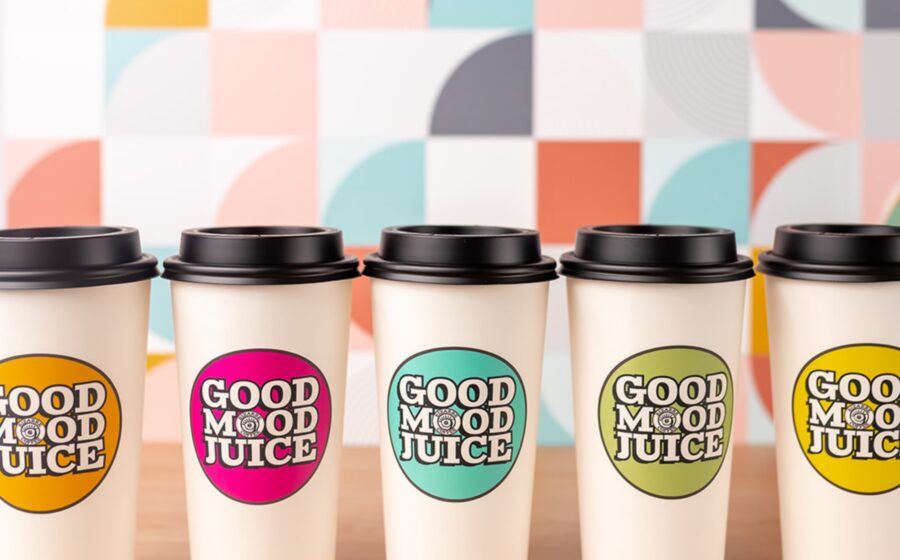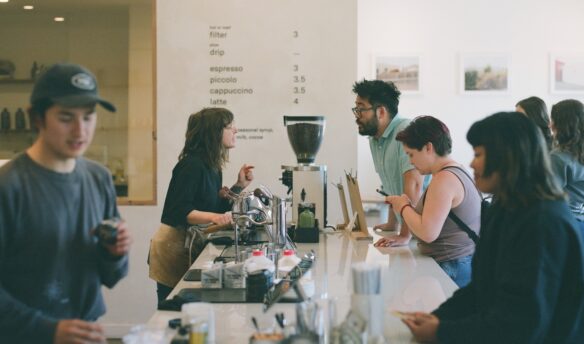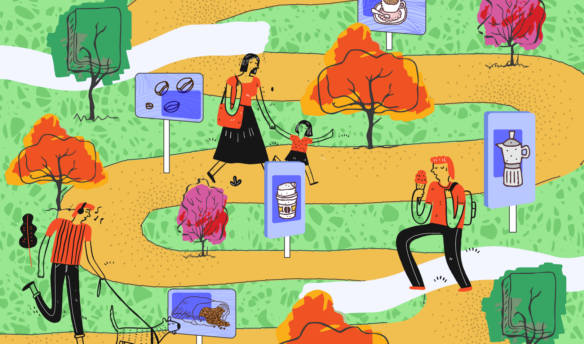This article is sponsored by our partner, Your Brand Cafe.
One of the early challenges for new coffee shop owners is deciding which takeout cups and packaging work best. With so many packaging options, figuring out the ‘right’ choice can be daunting. Factors such as pricing, supplier relationships, and customer safety all play an important role in determining the best takeout cup choice for a new coffee shop.
Along with picking suppliers and wading through packaging options, business owners also have to start from ground zero in terms of establishing their identity and presence in the community. Unlike established competitors, a new shop is a fresh face to potential customers, which adds another layer of complexity: the need to earn brand recognition and credibility.
According to Kelly Wright, senior director of marketing at YBC Supply, one way to tackle both challenges is by looking at your packaging to present your brand—almost like a first impression. “A solid presentation and reliable product gives you a more polished presence. It helps add the professionalism you’re aiming for as a new business in your community,” she says.
Here’s what new owners need to know to make the right choice among all the packaging options available. Getting these details right will set a brand apart and lay the groundwork for earning the trust needed to thrive as a newcomer in town.
The Challenges of Selecting Takeout Cups
The most important consideration when choosing cups and takeout packaging is safety. Coffee shop owners want to make sure the cups can handle the temperatures of each drink so customers can safely enjoy their drinks without any issues.
Major brands like McDonald’s have encountered significant legal trouble over hot coffee. In a famous 1993 case, a woman sued McDonald’s because she was burned by their coffee when it spilled while she was adding cream and sugar. Then, in 2023, another woman filed a lawsuit against McDonald’s, alleging an improperly secured lid caused the coffee to spill on her, resulting in burns that left scars on her lower body.
Sabrina Kaylor, owner of Bizarre Coffee in Georgia, knows firsthand how overwhelming it can be to choose takeout cups. “You need to know the cups will hold up while making the drink,” she says. “Are you feeling the heat through the cup? Should you go with double-wall or single-wall, or should you use sleeves? And sometimes, the cheapest one is too flimsy.”
Bizarre started as a pop-up at local farmers’ markets. With a shoestring budget, Kaylor opted for the most affordable choice for packaging: tear-back lids that customers peel up to sip their drinks. However, the lids were challenging and difficult to use. “I felt like the customer was always watching [other] people do it. People would always ask us how they should open it,” she says.
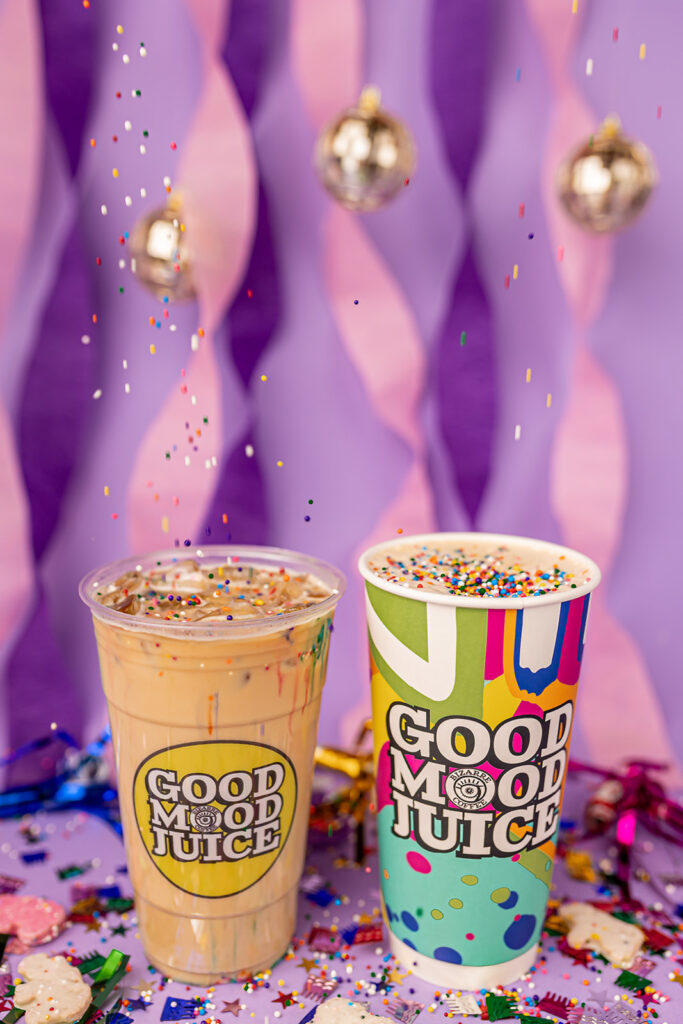
Their time at local farmers’ markets taught Kaylor the importance of having the proper cups and packaging to deliver a great customer experience. “The cheapest is not always the best option.”
When Bizarre Coffee opened its first permanent location in 2020, Kaylor knew it was time to find a better supplier, even if it meant spending more. They tried a few online suppliers but ran into problems with inconsistent supply. “There would be weeks that cups were sold out, and we couldn’t get the sizes we needed,” she says.
That’s when they came across Your Brand Cafe. YBC is known for its customizable, printed cups, but Kaylor saw that they offered an unbranded line of takeout packaging—Kaylor was still watching her budget, and unbranded cups (that they could later put stickers or stamps on) offered the best value. “It’s uncommon that companies that sell printed cups also sell blanks. We were excited because their cold cups were the best quality at the lowest price I had found,” Kaylor says.
Kaylor saw that YBC offered a range of cups, from hot coffee cups to double-wall varieties, plastic cold cups, and compostable options. “A lot of the cheaper cold cups are thin, so they get flimsy when you fill them. We found these kept their shape—and we do a lot of crazy things with our drinks, so it has to be able to withstand that.”
What Factors to Consider in Your Takeout Cup Selection
Before deciding on takeout packaging, becoming familiar with state and local regulations is essential. Cities like San Francisco and Honolulu have banned single-use plastics, including plastic straws, utensils, and foam containers. Places like New York City and Washington, D.C., have taken steps to cut down on single-use plastics and promote compostable or recyclable alternatives.
Even if local legislation doesn’t require eco-friendly packaging, some coffee shops may prioritize sustainability as part of their brand ethos. In that case, using compostable takeout packaging could be a good fit. Suppliers like YBC Supply offer a range of compostable options, including cups, containers, and accessories, like polylactic acid (PLA), a plastic alternative. “We have compostable lids and straws, but also strawless lids, which are popular for cold cups,” Wright says.
PET plastic, or polyethylene terephthalate, is a popular option for carryout containers and compostable paper products because it’s highly recyclable. “We’ve seen a big shift in sustainability and companies being more eco-conscious,” Wright says. “Our goal is to offer that selection at the most cost-effective price.”
When considering hot coffee cups, coffee businesses generally have choices: single-wall and double-wall. Single-wall cups are lighter and more economical, but they don’t insulate well and need a sleeve for extra protection.
In contrast, double-wall cups feature two layers of material, which provides better insulation to keep hot drinks hotter for longer. These cups are also more durable and eliminate the need for sleeves. “Double-wall cups are great for coffee shops looking for a cup that will hold the heat for longer while protecting customers’ hands,” Wright says.
For cafes that opt for single-wall cups, sleeves are often utilized as a branding opportunity—and some cafes even use sleeves on cold cups to enhance their presentation.
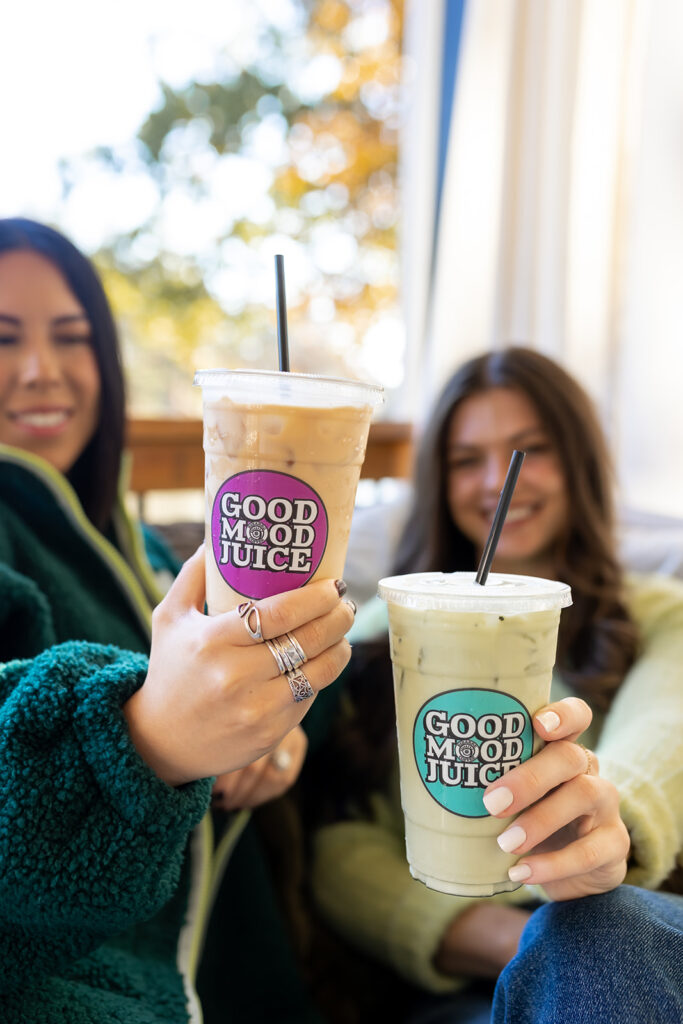
Another crucial consideration when choosing takeout cup sizes is a coffee shop’s menu. Standard drink (and cup) sizes usually range from 8 to 20 ounces. It’s essential to find a packaging supplier that offers multiple size options for each type of beverage. Some suppliers, like YBC Supply, offer lids that fit various cup sizes, usually in higher quantities per case. This means businesses can purchase one type of lid that fits a 12, 16, and 20-ounce drink, which can be helpful for storage since many independent coffee shops have limited space.
Different types of lids are also required for hot and cold cups. If a menu features seasonal coffee drinks topped with whipped cream, options such as clear plastic dome lids will work best. For traditional cold beverages such as cold brew and iced lattes, standard flat and strawless lids are also an option.
Getting Started With Takeout Cups
Here’s an idea of starting costs for cups and packaging from Your Brand Supply:
- Custom printed 8 oz plastic cups: Starts at $163 for one to two cases.
- Blank 8 oz plastic cups: Starts at $42 per case.
- Blank 8 oz paper cups: Starts at $38 per case.
- Printed 8 oz paper cups: Starts at $202 per case.
But with blank cups, owners should also consider additional expenses:
- Coffee sleeves: Starts at $40 per case.
- Custom stickers for branding: $0.75 per piece.
- Labor costs for team members to brand the blanks.
Other packaging considerations besides cups include stocking cup holders that can accommodate various cup sizes and types. Don’t overlook supporting items for takeout packaging, like carryout bags, pastry bags, straws, and stir sticks. These small details can make a big difference in a customer’s experience.
When opening a coffee shop, YBC suggests going over your options and making a checklist:
Hot Cups:
- Decide between single-wall and double-wall cups.
- Make sure a variety of sizes are available.
- Use sleeves for single-wall cups to provide extra insulation.
Cold Cups:
- Check local regulations around takeout packaging.
- Consider durable and recyclable clear plastic cups.
- Stock standard sizes for small, medium, and large drinks.
Drink Stoppers:
- Choose appropriate lids for both hot and cold drinks.
- Decide if you need dome lids for drinks with toppings.
Additional Considerations:
- Consider cardboard carrying trays for customers with multiple drinks.
- Make sure they’re compatible with various cup sizes and types.
- Remember supporting items like carryout bags, pastry bags, straws, and stir sticks.
- Explore branding options such as custom stickers for cups and sleeves.
Choosing the right takeout cups and packaging goes beyond mere logistics—it’s about shaping a brand identity as a cafe. By viewing packaging as a reflection of brand values, coffee shop owners can set the stage for building trust and lasting connections within the community.
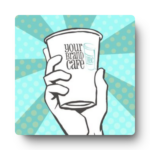
Sponsored by Your Brand Cafe
YBC Supply provides high-quality disposable cups, sleeves, takeout containers, and more to coffee shops and restaurants. Stock up on basics or get custom branded supplies.



